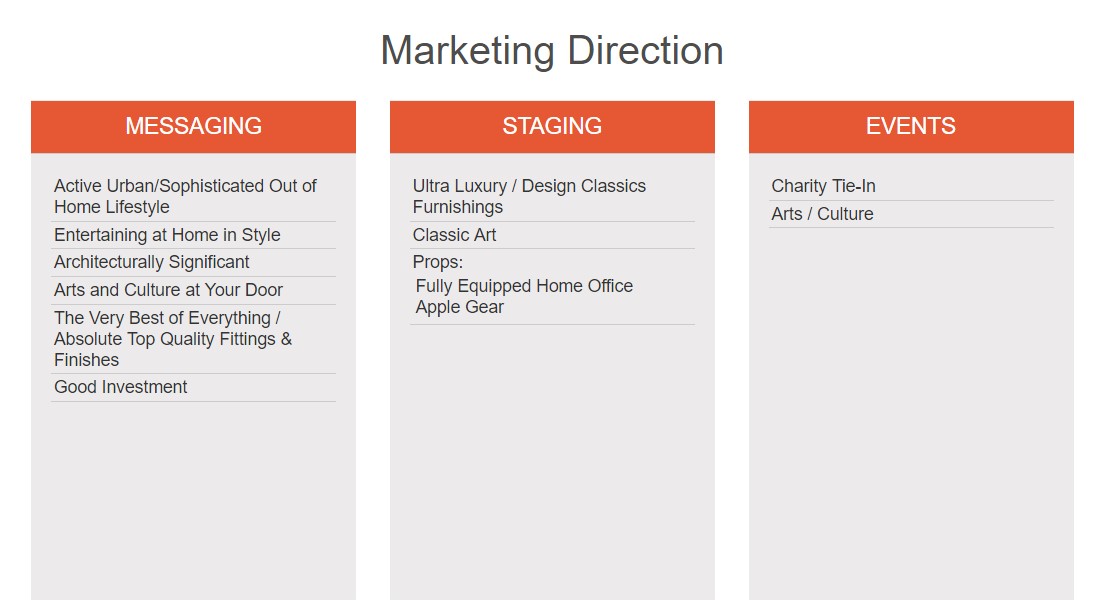MoxiWorks Already Delivers Upstream for Brokers
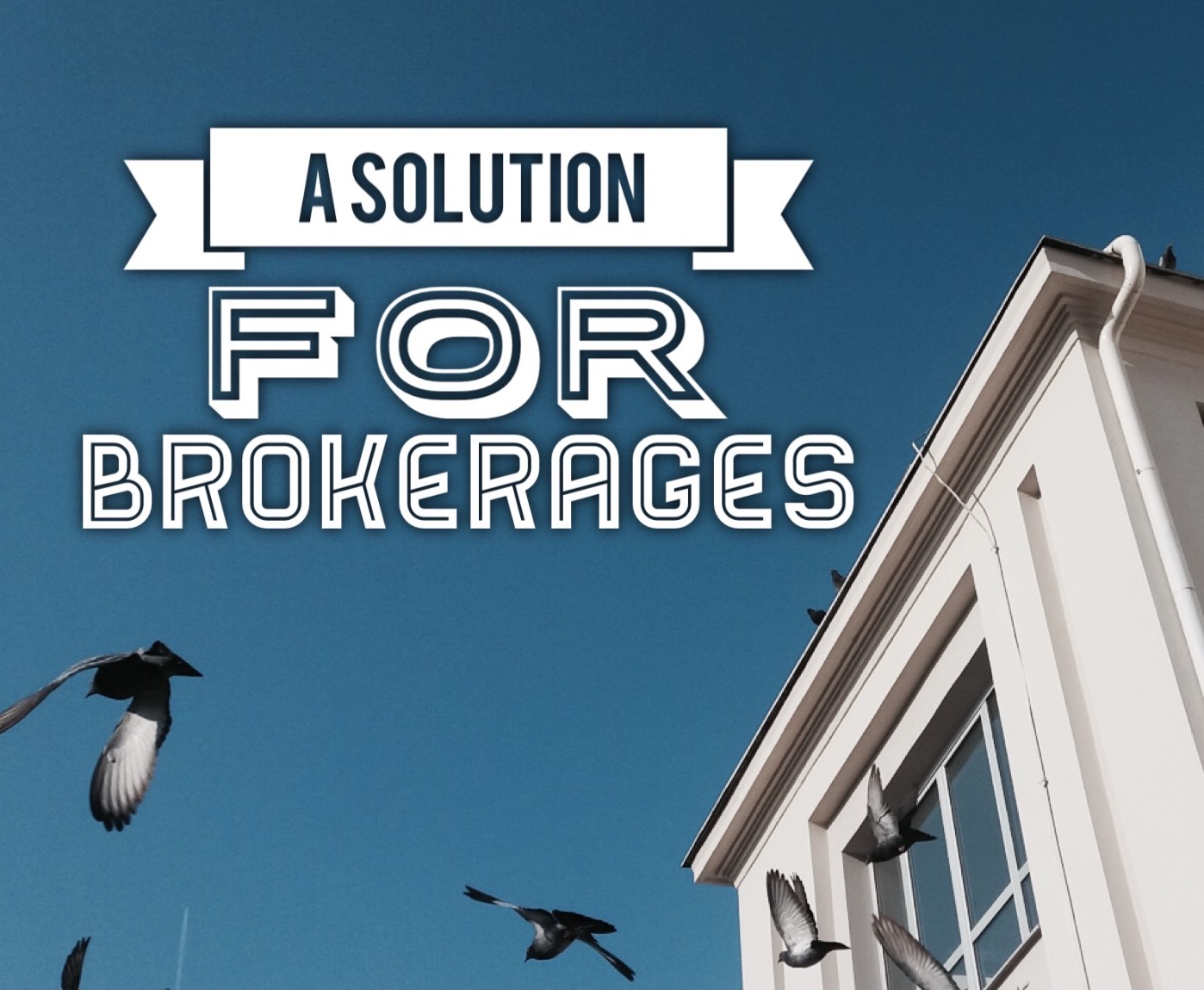
The pivot heard around the real estate world
When news broke of Upstream’s strategy pivot, we all stopped to see how they shifted because this not only has implications for brokerages, but for the industry as a whole. For many, Upstream’s movement represented brokers taking back control. This pivot means the power stays in the hands of the MLS.
What Happened With Upstream?
The original plan was for Upstream to stick themselves before the MLS organizations, granting brokerages much wanted control where they hadn’t before. Now instead of trying to get brokers to input listings with Upstream first, they will have brokers input listings into their MLS, and later can push said listing through a dashboard to Upstream if/when the broker chooses to. It’s not just a pivot, they flipped a 180 and it has major implications.
York Baur, CEO of Moxi Works, weighed in on the topic and said, “The point of Upstream was for brokerages to get control of their data. We were fans of the idea of upstream. If we had a magic wand and Upstream existed, then our team wouldn’t be spending their time chasing MLSs around, we would just be writing to the Upstream API and be done with it. The problem they were solving for the software companies and brokerages was a fantastic idea. We understand why they had to pivot – trying to change agent behavior at the MLS level is a huge challenge.”
There has to be a better way, right? We’re here to say: There is.
A Solution
 Moxi offers an alternative that gives more control to brokers. But before we explain how, we need to back up and look at the original goal of Upstream.
Moxi offers an alternative that gives more control to brokers. But before we explain how, we need to back up and look at the original goal of Upstream.
To give you some perspective, “The idea behind Upstream is to give brokerages the ability to store and distribute any information they deal with, not just listings. This includes information related to salespeople, employees, customers or clients, vendors, accounting and historical property data.” This is from a 2015 Inman article. They didn’t just set out to fix the control of property data, they set out to fix the brokerage control of all data.
So, what’s the alternative? The next best thing are open platforms like the Moxi Cloud. The end result for brokerages in our case, is the same. The brokerages data is all in one place and all the tool and services integrations can get to it. It’s a power strip where brokerages can plug and unplug all the best-in-class tools and services they want, while remaining in control of all their data.
Baur added, “There is good news to all of this, and that is that the Moxi Cloud open platform does what Upstream promised today, allowing property data, brokerage data, agent data, and consumer data, to be used and updated by more than 30 industry leading tools and services. Until the time Upstream or something like it exists, this is the best brokerage solution.”
The most common question we get is: “What if we commit to the Moxi Cloud and then Upstream happens… then what?” The answer is simple. We have already cultivated these tools and services, we would simply take the Upstream feed into our services and everything would work the same. It’s not the Moxi Cloud or Upstream, it’s the Moxi Cloud AND Upstream.
Final Thoughts
Our goal, why we do what we do, is all in order to strengthen a brokerage and give them control of their destiny. “The desire for brokers to have more control won’t go away and it will probably be filled by MLSs, brokers, and platforms like Moxi Works, that already build tools that give brokers that control,” said Cass Herrin, Director of Data Services at Moxi Works. “We will continue to focus on tools that give brokers control over their own listings.”
Baur added, “Brokers funded Upstream with the goal of gaining control of their data. While that’s been diluted by this pivot, brokers must realize that the vendor community and the open platform Moxi Works provides, aka the Moxi Cloud, has already solved this problem.”
Learn about the open platform and how it can benefit your brokerage here.
A glance at the Moxi Works Open Platform:

Why a Brokerage Platform Isn’t a Want, It’s a Necessity
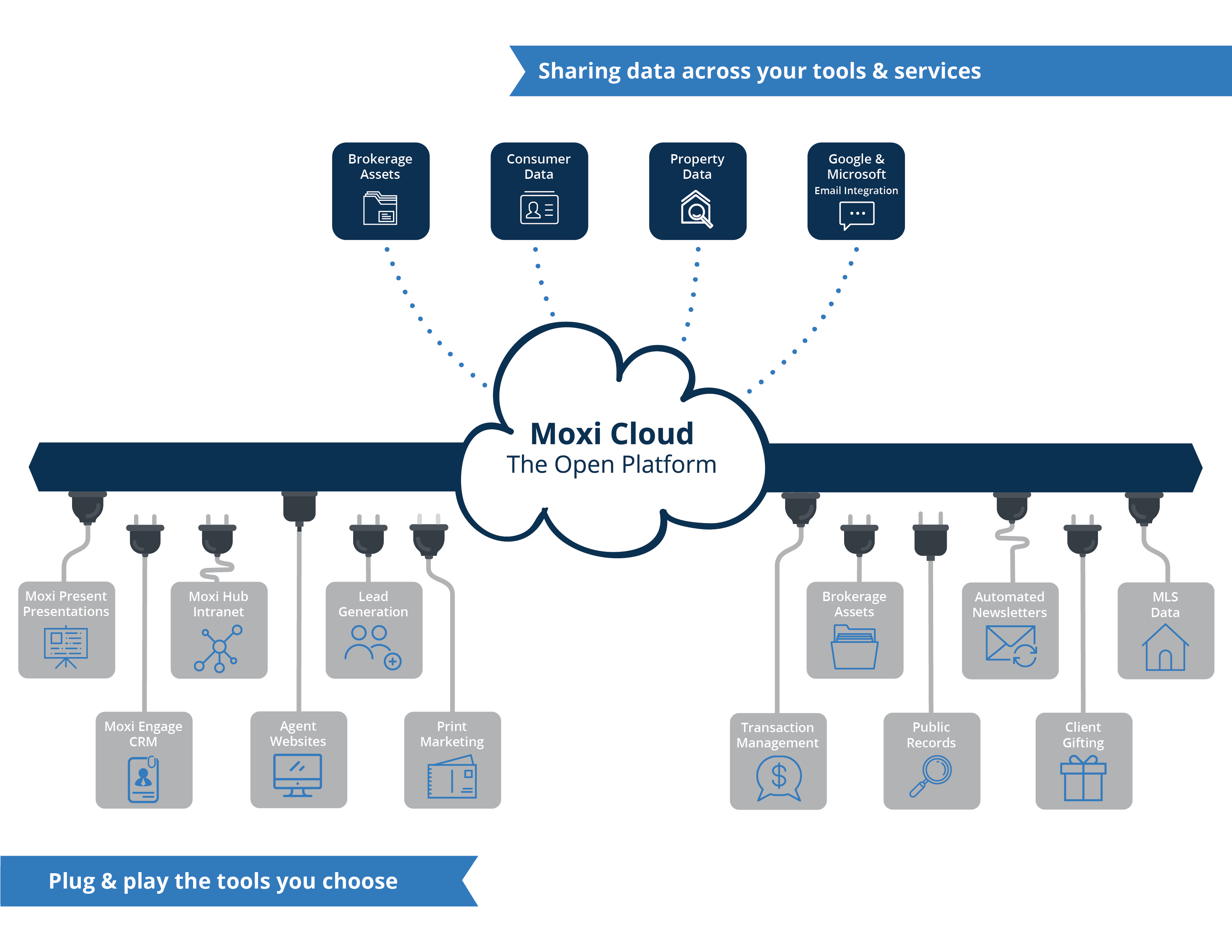
The real estate industry is evolving – don’t get left in the dust
By York Baur, CEO of Moxi Works
Platforms are new to our industry and unfortunately, they’re wildly misunderstood. It doesn’t help brokerages realize the intricacies of them when the term “platform” is being thrown around so heavily. Right now it’s the buzz word dujoure and many of these “platforms” don’t offer or do what they should. There are five core components that a platform should have and offer, which I’ll explain below.
The reality is, you don’t need a transaction platform or a marketing platform, you need a brokerage platform where all of your tools and services such as transaction management and marketing plug in and exchange data.
The importance of picking a platform that is driven by the right company for your brokerage cannot be ignored because you’re going to have to live with this thing for a long time. If you don’t pick the right one, it’s likely that you’re going to have problems in the future and changing platforms is no walk in the park. It’s like switching from Android to iPhone or vice versa – not a trivial change.
The five core components that the platform needs to have and offer are:
1. Property data
2. Brokerage and agent data
3. Consumer data
4. Integration with the cloud environment with Microsoft and Google
5. An API allowing other companies to integrate
A proper platform has a variety of benefits. The first is that it significantly increases the choices of tools and services that a brokerage has and significantly decreases the amount of effort that the brokerage has to put into configuring, supporting, and managing those tools.
The second benefit is the ability of the real estate software industry to innovate at a much quicker pace given that brokerages don’t have to reinvent the wheel since the platform already provides many of the basic services that applications need.
Types of Platforms
Up until now I’ve explained what a platform is, but not that there are different kinds. There are closed platforms and open platforms, and one has many more benefits than the other. The philosophy of an open platform is that it offers the best tools and services throughout its ecosystem and isn’t limited to the tools and services built in house. Here are some definitions:
Open Platform: Has an open API that allows brokerages to plug and play tools and services from multiple vendors, including multiple vendors per category (such as marketing, transaction management, etc.), as they see fit.
Closed Platform: Brokerages are required to take the tools and services from one vendor and a very short list of partners, limiting choice and flexibility.
Think of an open platform as a power strip that lets you plug and play the tools and services you want, and unplug the ones you choose to exchange for new, better ones. Basically, an open platform allows a brokerage to select all of the best tools out there, have them work together, and can change tools at will – hassle free.
Integration
If you remember, the great innovation of Windows was when you were able to switch from an HP to and Epson printer and everything magically worked after installing the new printer driver. You didn’t have to do anything to Word, you just hit the print button. It’s that flexibility and integration that you get when having a platform.
Like Microsoft, we don’t pretend to be amazing at everything. We let our brokerages choose the best tools and services out there for their brokerage and integrate them into our platform; our own flavor of Windows. We want the power to stay in the brokerages hands, allowing them to curate the tools and services they think are best for their own agents. Every brokerage is unique and because of it, each needs a unique solution.
What’s an Ecosystem?
There are many ways to describe an ecosystem, but for this application within our industry, this is how I choose to explain it:
“An ecosystem is a collection of complimentary applications all working together, sharing data, that make the whole greater than the sum of its parts.”
Any computer you’ve ever used in the modern age has its own ecosystem. Whether it’s that Epson printer you’re using or the many applications you go through in a day like Skype, QuickBooks, or Adobe, everything works together as soon as you install it. If you don’t like an application, you delete it and get another one. It’s as simple as that; that’s plug and play.
Here’s what a platform’s ecosystem should look like:

Why a Brokerage Should Care
If you think that you can ignore or take your sweet time figuring out what a platform is and what it means to your business – think again.
Look what Keller Williams is doing with the Keller Cloud, for example. Should you care about it? Absolutely – we’re excited that they’re enabling data exchange between their tools to make agents lives easier. What this means to you is that you’re going to have to provide a compelling answer when one of your agents is considering moving to Keller Williams, or you’re trying to recruit talent from them. It is absolutely pertinent that you have an answer for what your brokerage platform is when retaining and recruiting agents.
While we’re fans of the integration the the Keller Cloud is creating, it’s still not a truly open platform. Why? Because Keller Williams corporate is still deciding which tools and services will be allowed to plug-in. An easy way to spot the difference, is if it doesn’t have the five characteristics I mentioned above, it’s not an open platform.
The bottom line is, having an open platform and ecosystem of applications that run on it is the key to agent productivity and retention. Traditional brokerages with old school technology are losing agents to brokerages that have not only embraced tech, but have also invested in it. Investing in a platform will allow your brokerage to look to the future without anxiety holding you back, as long as you pick the right one.
Find out more about brokerage platforms and how they work by visiting this page.
A New World of Platforms for Brokerages

The difference between closed and open platforms exposed
By Mike McHenry, VP of Channels and Partnerships, Moxi Works
Takeaways:
- A platform is like a power strip; it lets you plug and unplug tools
- An open platform differentiates a broker’s tool set, aiding recruiting and retention
- The difference between a closed and open platform is monumental
A “Platform” is whatever you want it to be
Platforms have existed in technology for ages. Most industries have already adopted them, but it’s a relatively new idea for a residential brokerage. I’ve noticed that the word “platform” is being thrown around heavily right now – it’s the 2017 buzz word and because of that, it’s starting to lose its meaning.
Some of these vendors that are calling themselves “platforms,” however, don’t actually do what they should and because of that, you’ll need to know what to look for. There are five basic services that a proper platform should have and offer:
- Property data that can be shared across all tools eliminating redundant entry
- Brokerage and agent data that’s up to date
- Consumer data so technology can help agents manage their SOI
- Integration with both Microsoft and Google cloud environment to easily and securely share data across tech companies
- An API (it allows other tech companies to integrate and share common data)
Let’s also put some rumors to rest. Just because you use a platform doesn’t mean you need to embrace the entire platform. It would be insane for a single brokerage to use every single one of our 30 integrated partners. A platform is whatever you want it to be for your brokerage.
Also, Security isn’t an inherent problem in open platforms just because a system is open, doesn’t mean it’s insecure. YouTube for instance, is an open platform site. No one is afraid to use it.
Closed vs. Open Platforms
I have to shed light on how important the distinction between a closed vs. open platform is. Many vendors that call themselves “platforms” are just products that sit on a database with no API – meaning they have no way to communicate effectively with one another. Here are some examples:
Open platform: Microsoft Windows. Windows is an operating system that allows you to download whatever you want, whether that’s QuickBooks for your taxes or Adobe Photoshop, and delete the apps you no longer want or use. If apple is more your speed, think iPhone and the AppStore.
Closed platform: Video game consoles. If you buy a game for Xbox and you get a Sony PlayStation, you have to buy your games all over again. The choice is not up to you if you ever decide to switch.
As a broker, this means with a closed platform you have to go with whatever tools the vendor chose to work with OR the vendor built it all themselves and can’t afford to evolve it over time at the same speed as competitors. Either way, it can be a disastrous future for a brokerage.
The reality is, no one can be great at everything. An open platform allows a brokerage to get all of the best tools out there, have them work together, and can change tools at will – hassle free.
Open Platform Benefits
If you’re a broker and you’ve already invested in some tech solutions over the past three or four years like a digital transaction tool, gifting, or lead partners, you don’t have to change them to get on an open platform; you integrate them and preserve your investment in agent training. That’s why an open platform is so dominant: the power and tools stay in the brokerages hands. They help companies retain the tools they love and find replacements for the ones they aren’t jiving with.
If you choose a platform provider for those benefits today, that provider can help you flawlessly transition as new tools come online in the future. At the end of the day that’s what everyone wants right? No headaches and a shorter list of items for a brokerage to worry about.
If those are not good enough reasons to use an open platform, then how about this: money. Maintenance and support are cheaper on an open platform because it leverages the entire community that makes up the cloud. Development time also decreases. Boeing doesn’t make aircrafts, they assemble them.
What’s an Ecosystem?
This is another term used in the platform realm. An ecosystem is a collection of complimentary applications all working together, sharing data, that make the whole greater than the sum of the parts. Each platform has its own ecosystem that makes up the cloud.
Again, think of your iPhone. You can have all of your applications together so that the device becomes an indispensable business tool. You get to pick à la carte whatever applications you need and don’t have to worry about how they work together. If you find later you don’t like an application, you can delete it and install a different one.
Why a Brokerage Should Care
It’s no secret that the pace of change for real estate technology is accelerating. We know that there are hundreds of companies making technology for residential real estate, which makes for thousands of applications available for use today.
What this means to a brokerage owner is that there’s no way to predict which companies and applications are going to succeed or even to envision what technologies will come into the market in the future.
Having a platform and ecosystem of applications that run on it is the key to agent productivity and retention. If you don’t think that having a complete integrated technology platform and applications to offer your agents is important, talk to a broker that just lost an agent to Compass.
If you choose the right platform, you’re going to get most of the benefits that Upstream promises for your brokerage today and will future-proof your brokerage for what’s to come in the future.
This Moxi Platform Partner Shows Who (and How) to Target During Home Sale
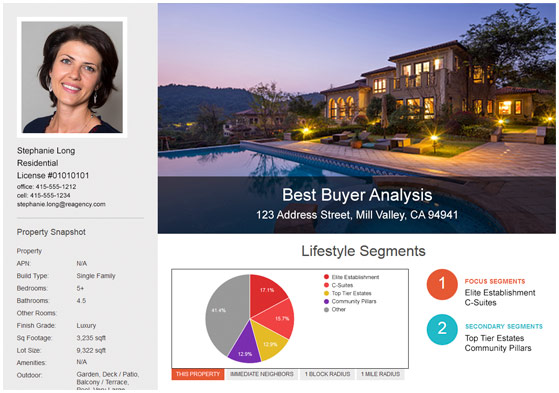
Totomic’s Best Buyer report gives agents a major digital edge, saving precious time & money.

With the inception of the Moxi Works open platform, our sole purpose is set to helping brokerages innovate and future-proof their businesses. We’ve added a lot of tools and services lately, but only those that are the brightest and best in the industry. With that spirit in mind, we want to announce another best-in-class service integrated into the Moxi Cloud open platform: Totomic, which helps guide agent marketing tactics through an in-depth analysis of big data.
“Where most marketing plans fail is when there’s no recommended action. The marketing direction Totomic provides is clear and concise, allowing agents to hit the ground running on their listings. We’re currently rolling out to a couple mutual clients and are excited to have them on our open platform within our Moxi Engage CRM,” said Mike McHenry, VP of Channels & Partnerships.

Totomic uses big data, allowing realtors to identify, reach, and sell to actual buyers in less time, at the best price. Specifically, their Best Buyer report highlights buyer psychographics, customized selling points, staging tips, and ad-buy recommendations. Totomic encourages specific action from their analysis of the data, unlike other sources that analyze but leave it to the agent to decipher what to do with it.
Totomic’s proprietary, patent-pending technology gives brokerages deeper insight into their customers and markets than ever before. Best Buyer drives insight into prospects and properties by fusing data from a wide variety of sources into easy to understand, actionable intelligence that can be used to drive marketing programs, guide development, and secure new business. The data they gather is run through Totomic’s proprietary algorithm that builds a set of audience profiles within the Best Buyer report. Totomic matches property profiles with audiences based on scientific parameters drawn from thousands of fields of data. Sound familiar? It’s not unlike online dating sources that match people based on interests.
Most agent marketing tools only use the most accessible data sources on the market, such as MLS data, which means a lot of agents are using the same data as their competitors are. Totomic gives agents a competitive edge with their unique mix of data.
Stretch advertising dollars further and increase the amount of time spent pursuing additional listings!
Find out more about the Moxi Cloud and how it’s taking the real estate industry by storm by clicking here.
Moxi Works Launches New Product, Granting Agents Client Insights
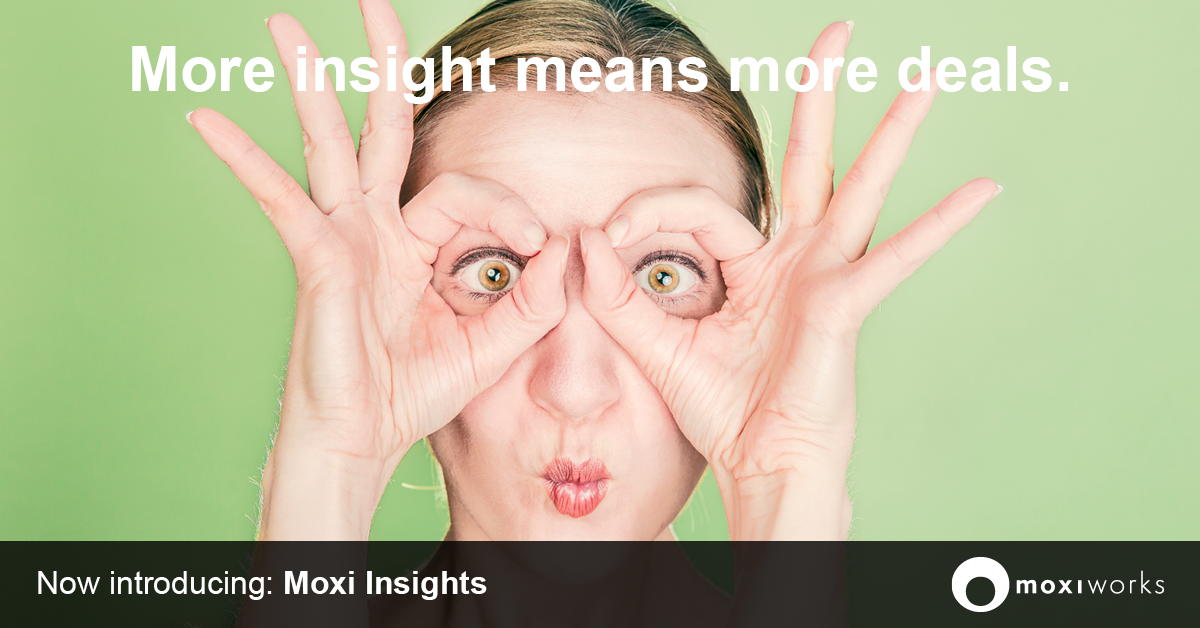
We’ve been hard at work this year, creating products we know agents will love. Today we’d like to announce our newest product: Moxi Insights! This product gives agents access to client insights with the click of a button.
Moxi Insights, currently in Beta, gives quick and organized client information to agents through their Moxi Engage CRM. General demographics, housing info, lifestyle choices, financials, and more can all be learned about clients through the Moxi Insights product.
“Moxi Insights is a feature that not only adds to the overarching Engage CRM experience, but it’s also one that has the potential to revolutionize sphere marketing as we know it. Let’s face it, the core of an agent’s business is built upon a strong client base, but it’s impossible to personally keep up with every single one. Moxi Insights now does it for them. By reminding an agent to reach out to clients when their kids are heading off to college or letting them know the investment opportunities their clients care about, it frees up even more time for agents and keeps them on track,” said York Baur, CEO of Moxi Works.
Depending on the public data available, the insights given from Moxi Insights might include detailed information anywhere from hobbies to where clients/prospects donate and invest their money. Agents can potentially see if their clients have pets, certain cars, or if they’re a value shopper.
Moxi Insights also allows agents to filter their client lists based off of their likelihood to sell. For instance, if there are teenagers in the house, Moxi Insights will notify the agent that this family might be interested in downsizing soon. This is all based off public data that Moxi pulls into the agent’s Engage account. It helps agents quickly understand who they should be targeting in their sphere today, with badges next to the clients that are gearing up for a major life change.
Like all Moxi Works products, Moxi Insights is mobile optimized through their Moxi Engage CRM and can be accessed on any handheld device, laptop, or tablet.
Find out more about Moxi Insights, our other products, and what the Moxi Cloud is all about right here.
Watch how Moxi Insights Works below!
Targeted Direct Mail, Digital, & Email Marketing Now on the Moxi Cloud
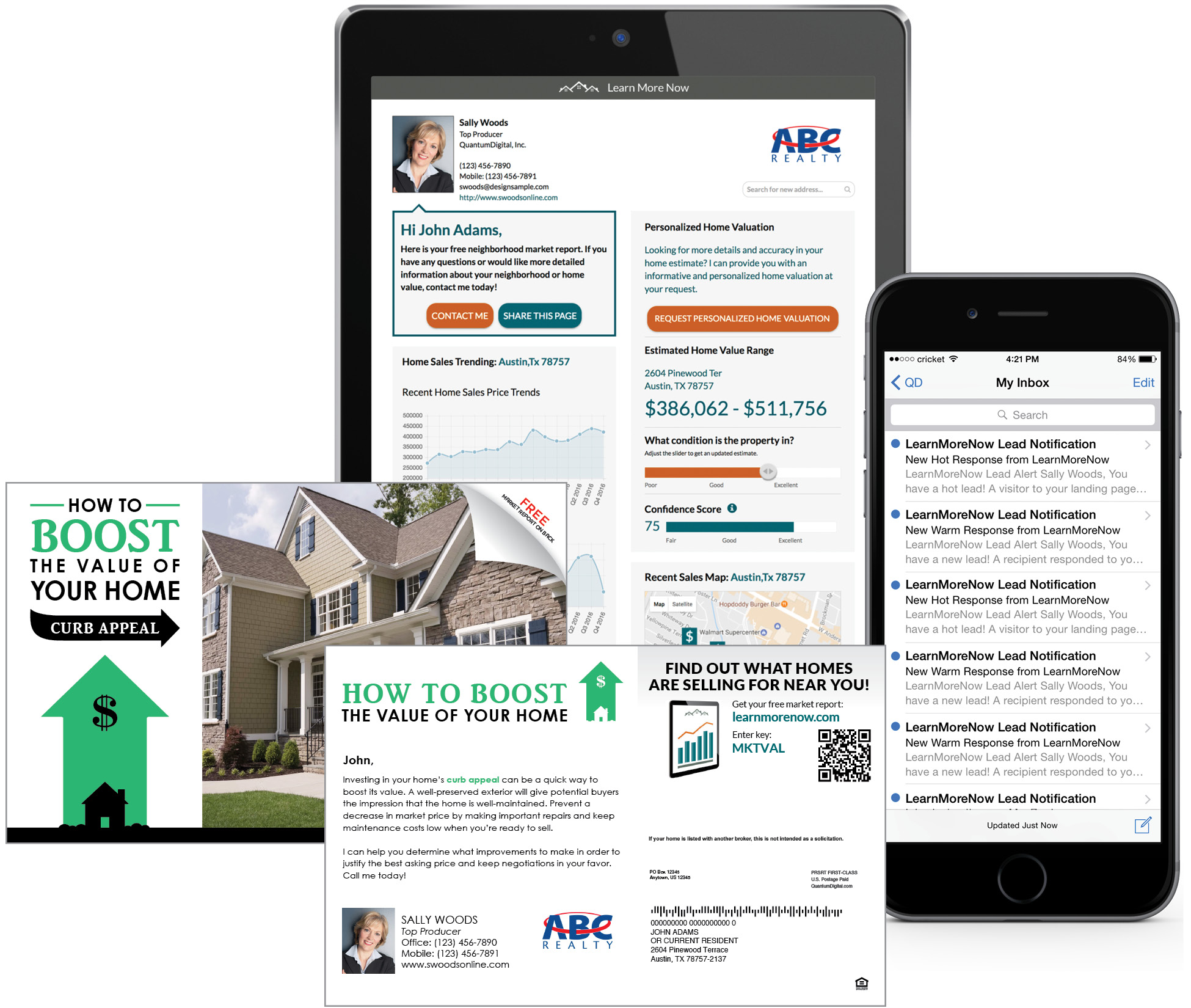
With over 30 integrated vendors and growing fast, Moxi Works is very excited to announce our new addition to the Moxi Cloud: QuantumDigital.
 QuantumDigital is renowned in the world of direct mail, digital, and email marketing for real estate. It’s hard to beat solutions that generate revenue, all while having a 24-hour turnaround time for postcards and all print marketing.
QuantumDigital is renowned in the world of direct mail, digital, and email marketing for real estate. It’s hard to beat solutions that generate revenue, all while having a 24-hour turnaround time for postcards and all print marketing.
The Moxi Cloud open platform is an entire system built specifically for brokerages and agents to make their lives more efficient. This new vendor will be integrated into the Moxi Cloud through our sphere marketing system powered by Moxi Engage CRM.
“QuantumDigital has great relationships in the real estate industry and we’re jazzed to be partnered with them. Integrated in the Moxi Cloud, together we bring a seamless print, digital, and email experience to our broker and agent customers. We’re looking forward to innovating with the Quantum Digital team,” said Mike McHenry, VP of Channels and Partnerships.
Jim Damman founded QuantumDigital in the 80’s to provide a simple way for agents to generate leads, while freeing up their time to meet clients face-to-face. He pioneered the concept of targeted direct mail and created a postcard marketing service that was fast and easy. Since then, they have paved the way for real estate marketing.
Agents can utilize their offerings by choosing from hundreds of online marketing services or the classic and effective direct mail solution. Some direct mail postcard marketing options include Just Listed postcards, farming, and buyer follow-up.
With agents in mind, QuantumDigital created easy ordering tools that store agents’ photos, company logo, and other details to save agents time in the ordering and checkout process. Their suite of products and services was truly created to make direct mail simple and fast for real estate agents. After all, they’ve been doing it for over 30 years in the industry!
Learn more about QuantumDigital and their deep roots in real estate below:
Huge Platform Expansion for Real Estate Brokerages

It’s been a busy couple years at MoxiWorks. We spotted a major trend developing that was making it harder and harder for brokerages to evaluate and implement the ever-increasing number of technology solutions. Every day it seems there’s a new lead generation company or mobile app or a marketing program for text. Or 3D video. It’s a tsunami of technology and the brokerages who don’t have an integrated platform are really falling behind.
No Integration Is Painful
It’s one thing just to track all the updates from existing providers and vet the newcomers. It’s quite another to integrate the ones you choose into a seamless experience for your agents. The underlying problem is all these tools and services don’t share data. Many, for example, require you to input your roster so they can work properly. Importantly, they are created independently and don’t work together. Your open house app and your CRM probably aren’t connected and doing things together to support your agents. There’s no cooperation in your system. The tsunami is a big problem that can’t be solved by brokers on their own.
You Need an Open Platform
An open platform is really a data exchange where all your applications give and receive the information they need to deliver a better experience for your agents. Everything from listing and roster data to public records data. The platform acts like a power strip where your applications plug in and everything just works. With it, your print provider can access the consumer data along with your brokerage branding to run effective marketing campaigns. With it, your agents don’t need to redundantly enter the listing information into your digital transaction management system since that can be transferred automatically. Done well, your agents will be presented the right tool at the right time making them more efficient. They like that a lot.
The Moxi Cloud
MoxiWorks has a well-established brokerage open platform, called the Moxi Cloud. It runs many of the most successful brokerages in the country. We have made it easily accessible for the whole ecosystem of tools and services. That was the technical part. On the business side, we created a long list of business relationships with companies that provide the tools and services you need – at a best-in-class level. Not only do they get the data, but we surface them at the right time and place. For example, when your agent goes to manage a transaction in their CRM, a transaction is created in your digital transaction manager. No more double entry. No million passwords to remember since it has SSO (single-sign on).
MoxiWorks now has a full-time team dedicated to building and integrating tools and services. We are providing the resources brokerages don’t have. We currently have over 40 integrated partners and the list is growing fast.


 Facebook
Facebook
 X
X
 Pinterest
Pinterest
 Copy Link
Copy Link


